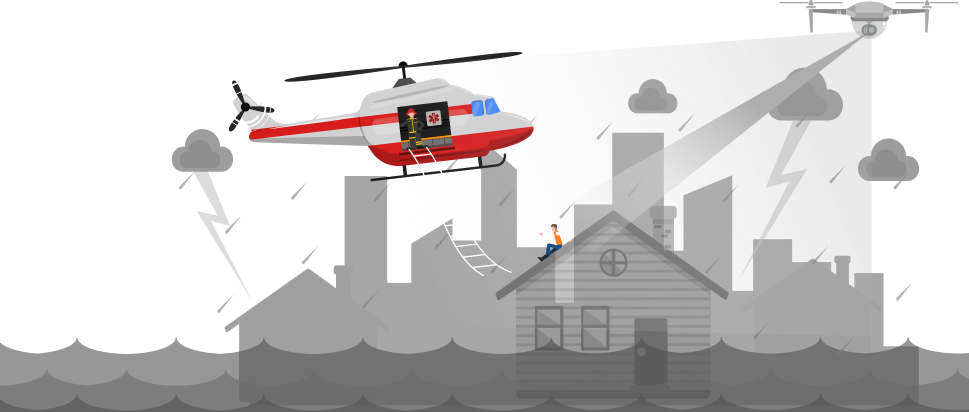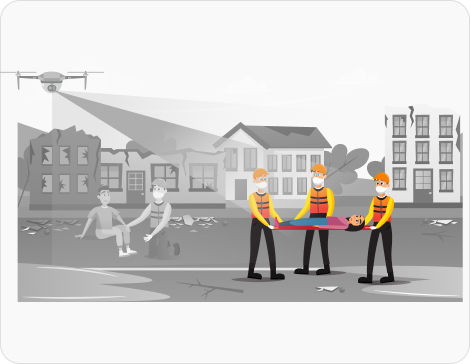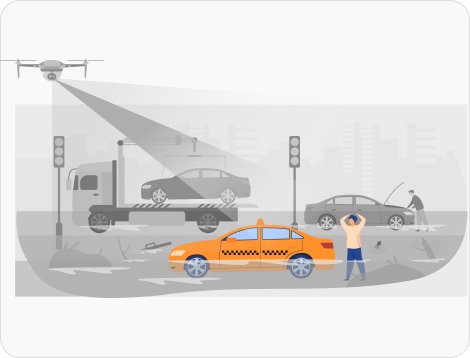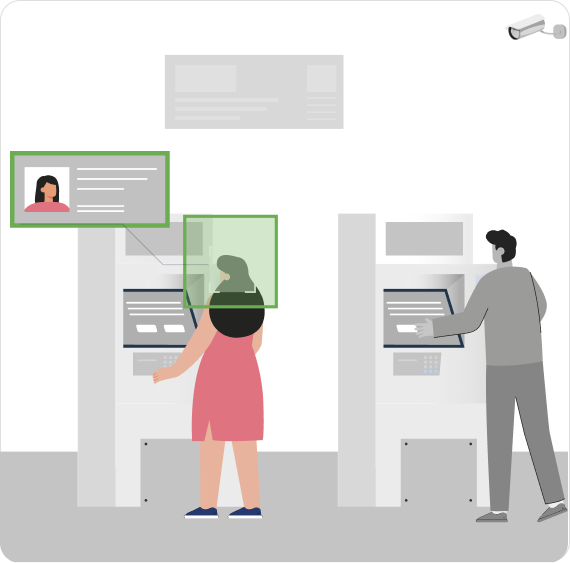Relief Effort Coordination
Effective disaster response with the efficiency of AI.


Our relief effort coordination solution uses AI and computer vision to analyze disaster-affected areas. It helps in assessing damage levels and optimizing resource allocation. It’s a great aid for emergency responders and helps organizations streamline operations and maximize impact
Human-led manual assessment of disaster zones slows down aid distribution.
Our solution rapidly evaluates affected areas and prioritizes resource deployment based on real-time needs.
Lack of proper coordination and insights often lead to resource wastage or shortages.
AI analyzes supply chains and suggests efficient routes for aid distribution where needed, on time.
Its difficult to find stranded individuals in large disaster zones with any real-time knowledge.
Improve rescue operations as our system uses drone and satellite imagery to identify and locate survivors.
Communication becomes difficult in disaster struck areas due to damaged infrastructure.
Guidance by AI can help set up other communication networks and optimize response efforts.
This solution is crucial for organizations and agencies who are involved in disaster management.


Using drones, satellite imagery and on-ground reports, real-time data is gathered.
Affected area is analyzed and the severity of destruction is determined through it.
Delivery routes are prioritized with the help of AI and resources are distributed effectively.
Live tracking is enabled for relief efforts with real-time data and insights, helping in streamlining operations.
Stay updated with the trending and most impactful tech insights. Check out the expert analyses, real-world applications, and forward-thinking ideas that shape the future of AI Computer Vision and innovation.
It’s 6:00 AM on a rainy day at a bustling inland container depot. The floodlights are buzzing, fighting a losing battle against the gray drizzle. A queue of eighteen-wheelers is already idling at the gate, engines rumbling, exhaust mixing with the fog. In the guard booth, Mike is on his third coffee. He’s a good […]

CEO & Co-founder
Collaboration creates a story. Some are born from timing, others from shared ambition. But the partnership between WebOccult and Deeper-I began from something subtler, a mutual belief that intelligence should live closer to the world it serves. For years, Vision AI has been mastering the art of seeing, while Edge AI has been perfecting the […]

CEO & Co-founder
Any object that leaves a factory belt carries an identity. It may appear as a string of numbers etched into metal, a barcode printed on paper, or a label attached to packaging or glass material. Together, these small symbols form the nervous system of modern industry. They track movement, record responsibility, and ensure that everything […]

CEO & Co-founder